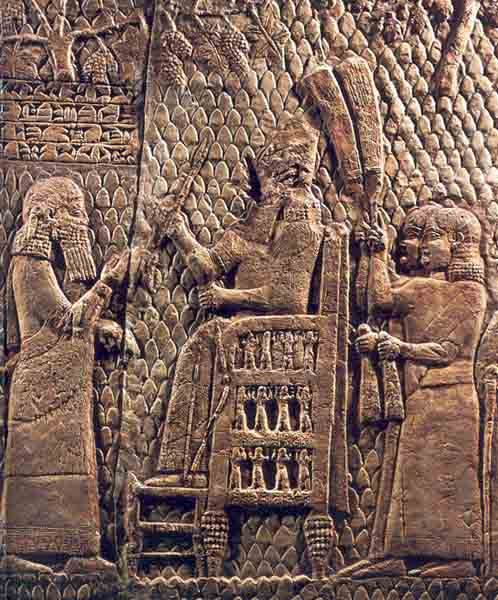Image Details

Erich Lessing
“Sennacherib, king of the world, king of Assyria, sat upon the nîmedu-throne and passed in review the booty from Lachish.” So reads the cuneiform inscription on this wall relief from the Assyrian palace at Nineveh. Excavators at Lachish have determined that the Assyrian camp, where Sennacherib bivouacked during the siege of Lachish and Jerusalem, was located on a hillock only 1,800 meters from the tell’s southwest corner (the current location of Moshav Lachish, a farming community). The king may have even been able to watch the Lachish battles from the camp’s makeshift throne room, shown in this carving. (In the relief, Sennacherib’s face and wrists have been deliberately gouged out—perhaps during the riots in Nineveh following his murder in 681 B.C.)
Although the detailed annals of Sennacherib record only a single series of triumphant attacks on Lachish, Jerusalem and 44 other Judahite cities in 701 B.C., the ambiguous description of the Assyrian siege in 2 Kings 18–19 indicates that the Assyrian army may have had to return a few years later, according to author William H. Shea.
